Pandemic lessons
A new report from the University of Maine Beyond Crisis Schooling project examines the unprecedented challenge of “redesigning schools” undertaken by educators for the 2020–21 school year. Led by associate professor of educational leadership Catharine Biddle and lecturer in educational leadership Maria Frankland, the report, “Re-opening Schools in the Midst of the COVID-19 Pandemic: Lessons for Leaders from the 2020-2021 School Year,” aims to inform the practices of school leaders for the current school year.
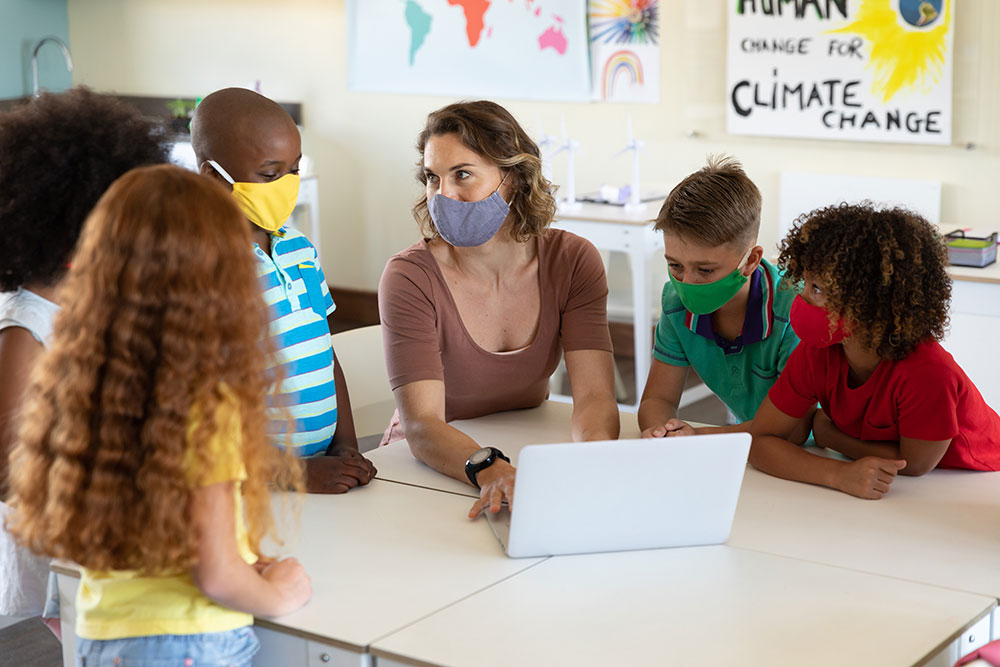
Part of the challenge, the report points out, is that fear of COVID-19 transmission undermined staff, parent and school board confidence in schools’ ability to educate children and keep both students and staff safe, and there were no one-size-fits-all solutions.
The report offers several recommended leadership strategies for superintendents to build public confidence in schools’ COVID-19 response, including transparency in how equitable student learning is being defined.
“What inspired confidence in one district undermined it in another, depending on a variety of contextual factors,” the report states. “Additionally, districts were working with vastly different arrays of local resources, including community organizations, public health infrastructure, community internet access, and political beliefs.”
Since April 2020, the Beyond Crisis Schooling project has examined the COVID-19 response by schools in Maine and Pennsylvania, two states with very different infection rates and local infrastructure. The research team’s first report, released in August 2020, examined district practices that supported remote student learning from March to June 2020. For the new report, the researchers collected approximately 7,000 documents from 674 school districts. According to the superintendents interviewed by the researchers, three factors were most critical in determining stakeholder confidence in schools reopening: size and urbanicity; regional decision-making; and partisanship.
Next gen sensors for harsh environments
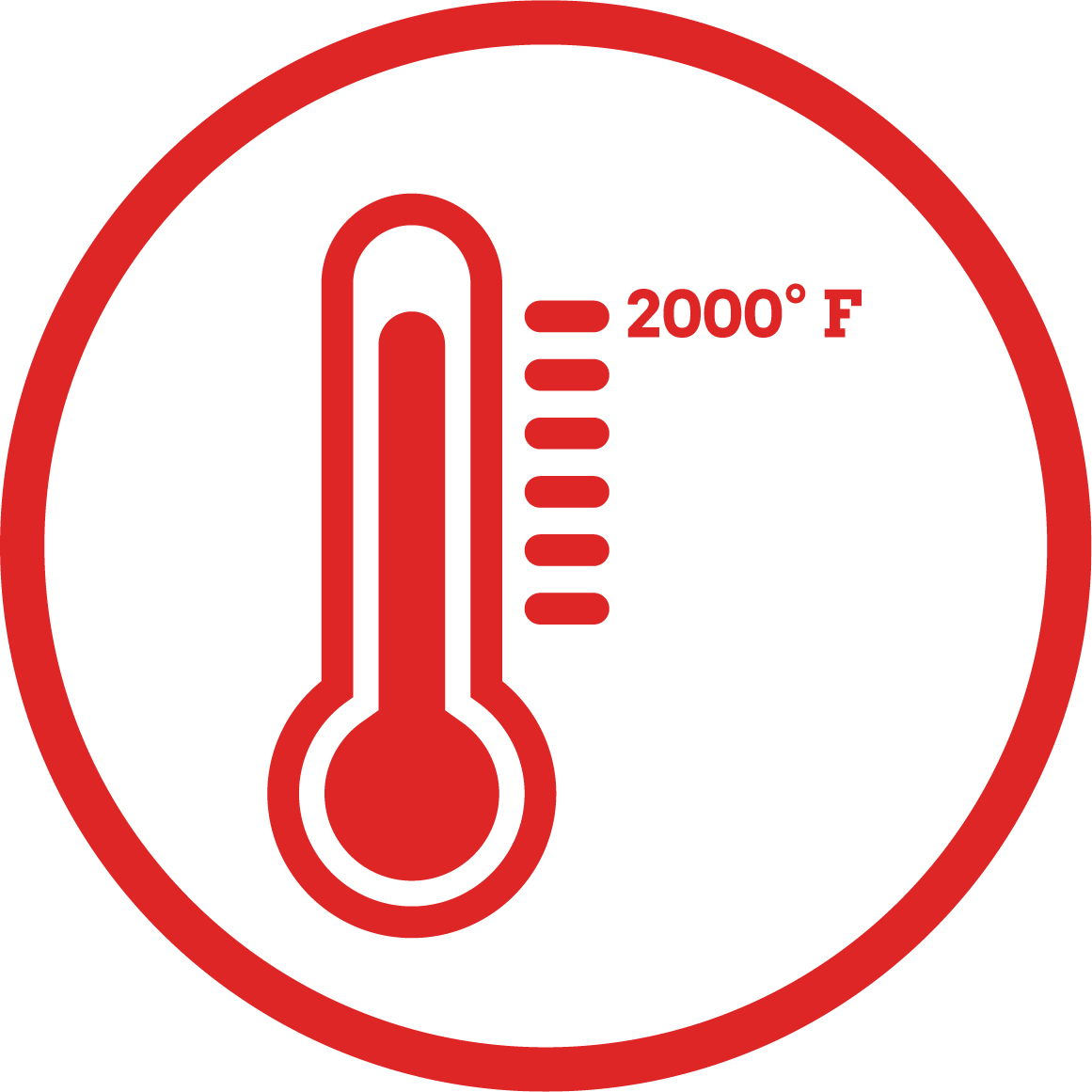 The next generation of harsh environment materials and wireless sensor techniques are the focus of a $2.34 million Department of Energy (DOE) EPSCoR award for research led by University of Maine researchers Mauricio Pereira da Cunha and Robert Lad.
The next generation of harsh environment materials and wireless sensor techniques are the focus of a $2.34 million Department of Energy (DOE) EPSCoR award for research led by University of Maine researchers Mauricio Pereira da Cunha and Robert Lad.
The DOE award was one of nine initiatives funded nationwide for a total of $22 million. The UMaine research received a DOE EPSCoR implementation grant in 2019.
Pereira da Cunha, professor of electrical and computer engineering, and Lad, professor of physics, will lead an interdisciplinary, multi-institution team of researchers. They include eight UMaine faculty members and other researchers from the University of New Hampshire, Bates College and the University of Southern Maine. The research will employ the Frontier Institute for Research in Sensor Technologies (FIRST) facilities and equipment, the university’s premier research center for conducting nanotechnology and advanced sensor research.
Their primary goal is to address the pressing need for a new generation of sensor materials, devices and systems that can operate under extreme temperatures (up to 2000° F) and harsh environments that may consist of erosive particles and oxidizing, reducing or corrosive gases. These types of conditions are often found in the rapidly expanding energy sector, such as power plants, gas turbine generators, renewable power generation and advanced manufacturing.
Oldest adobe architecture in Americas
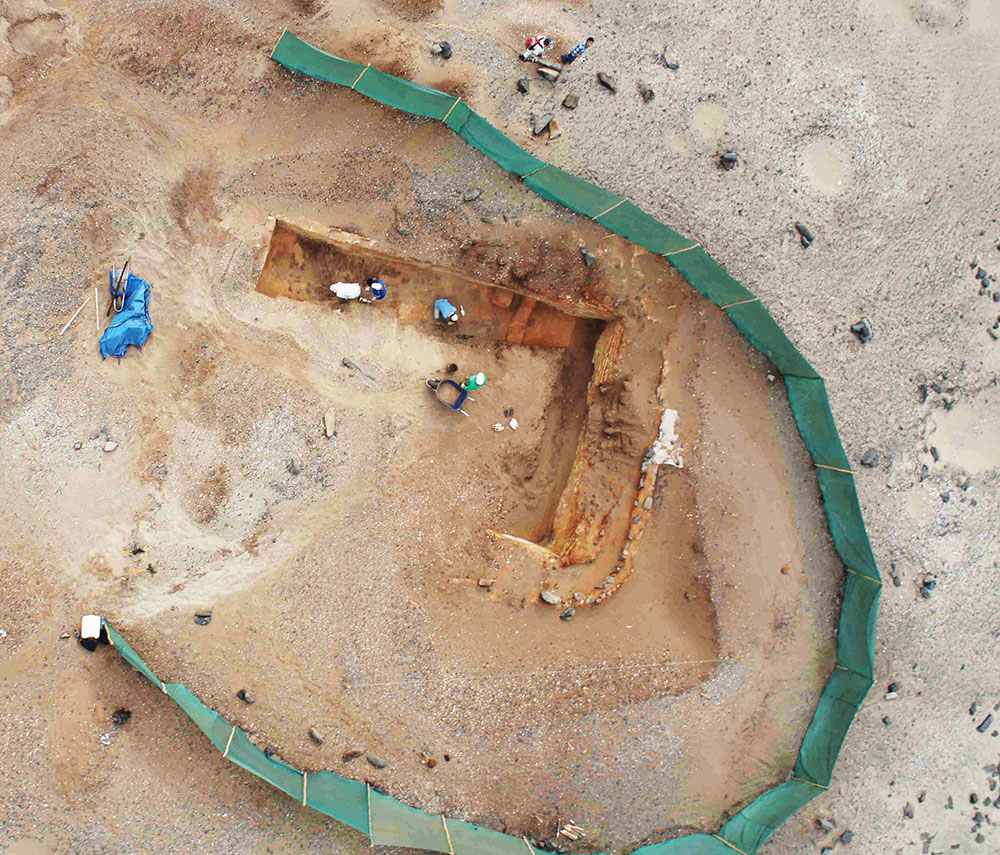 On the north coast of Peru, researchers have discovered the oldest adobe architecture in the Americas, constructed with ancient mud bricks carved from natural clay deposits created by floods caused by El Nino.
On the north coast of Peru, researchers have discovered the oldest adobe architecture in the Americas, constructed with ancient mud bricks carved from natural clay deposits created by floods caused by El Nino.
The pre-Hispanic bricks — carved from sedimentary layers versus created by mixing clay, temper and water — date the invention of adobe architecture to more than 5,100 years ago, according to the international research team led by archaeologist Ana Cecilia Mauricio.
In the Andes, early adobe monumental structures are associated with communal ceremonies and the rise of social complexity, the team notes.
The research began when Mauricio was an Interdisciplinary Ph.D. student in the University of Maine Climate Change Institute. Her 2015 dissertation advisers were UMaine professor of anthropology Dan Sandweiss and associate research professor Alice Kelley in the Climate Change Institute. Mauricio also received a master’s degree at UMaine.
Mauricio, now a professor of archaeology at the Pontifical Catholic University of Peru, has been conducting archaeological and geoarchaeological studies at the site of Los Morteros and the Archaeological Complex of Pampa de las Salinas in the lower Chao Valley since 2012. Los Morteros had been considered a burial mound until a UMaine research team composed of Sandweiss, Kelley and Joseph Kelley and Daniel Belknap, both of the School of Earth and Climate Sciences and the Climate Change Institute, used georadar in 2006 and 2010 to investigate the mound’s interior.
Mauricio’s research showed that the mound once thought to be a natural phenomenon is the site of monumental architecture. Evidence of human occupation included stone hearths containing small fish bones, charcoal and scallop shells, and rooms made of adobe bricks, with plastered walls and clay floors.
Building ag literacy
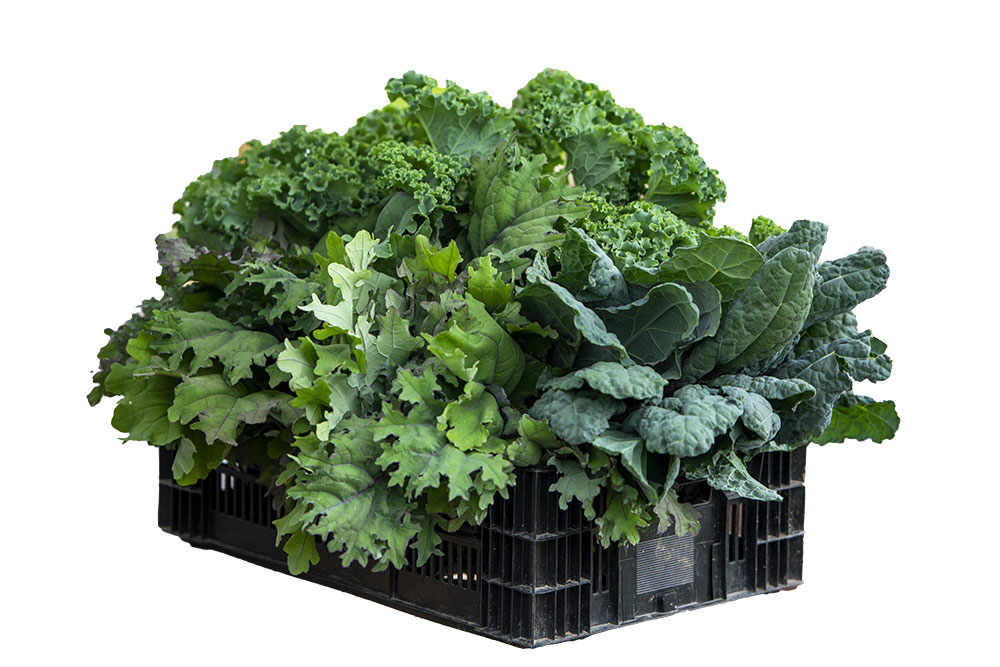 A new University of Maine initiative to build agricultural literacy through an immersive culinary experience for career and technical education (CTE) culinary arts instructors is one of 21 projects funded nationwide by the U.S. Department of Agriculture’s National Institute of Food and Agriculture.
A new University of Maine initiative to build agricultural literacy through an immersive culinary experience for career and technical education (CTE) culinary arts instructors is one of 21 projects funded nationwide by the U.S. Department of Agriculture’s National Institute of Food and Agriculture.
NIFA has invested $6.2 million in the Professional Development and Secondary School Teacher grants to increase the number of K–14 teachers and educational professionals trained in the food and agricultural sciences. The grants to prepare more educators in food and ag science, and support best teaching practices that enhance student learning outcomes, are part of NIFA’s Agriculture and Food Research Initiative.
The project provides a holistic approach to uniting community partners to identify the best practices for agriculture literacy education at CTE culinary arts programs in Maine.
UMaine’s Building Agriculture Literacy Through an Immersive Culinary Experience project, which received a $300,000, four-year grant, is led by Kathy Savoie, University of Maine Cooperative Extension educator and professor; Willie Grenier, executive director of Maine Agriculture in the Classroom; and Rob Dumas, UMaine food science innovation coordinator and pilot plant manager. CTE culinary arts instructors will receive professional development experiences to increase their agricultural literacy, and enhance the connectedness between agriculture and food service in their culinary arts curricula.
A goal of the project is to help create a skilled, educated workforce that will increase the use of Maine grown, processed and produced foods in their programs and careers by changing the way students — tomorrow’s food professionals — think about the importance and value of local food, according to the researchers.
“Providing professional development experiences for CTE instructors will help to shift culinary arts programs toward local food system education with the end goal to create a workforce that is proficient in Maine agriculture, and that will be poised to meet today’s consumer needs and ultimately boost our state agriculture” says Savoie.
Food rescue
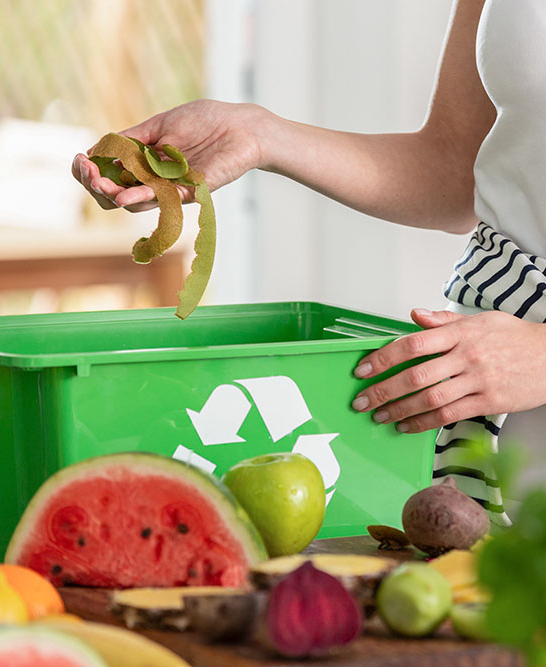 The Senator George J. Mitchell Center for Sustainability Solutions at the University of Maine has partnered with a coalition of Maine communities, including Waterville, to advance the Food Rescue MAINE campaign for ending food loss and waste. The towns are part of a growing statewide movement to reduce municipal waste disposal costs and improve soil, air and water quality by recycling discarded food into compost or biogas.
The Senator George J. Mitchell Center for Sustainability Solutions at the University of Maine has partnered with a coalition of Maine communities, including Waterville, to advance the Food Rescue MAINE campaign for ending food loss and waste. The towns are part of a growing statewide movement to reduce municipal waste disposal costs and improve soil, air and water quality by recycling discarded food into compost or biogas.
Other municipalities working with the Mitchell Center to promote food recycling initiatives include Winslow and Portland; both opened community food waste drop-off sites on Earth Day 2021.
Food Rescue MAINE is a statewide food waste education and action campaign funded in part by the Maine Department of Environmental Protection’s (DEP) food waste diversion program and spearheaded by a Mitchell Center team comprised of faculty advisers and student interns from several Maine colleges and universities. The project slogan, “Maine Food-Too Good to Waste,” is a call to action.
As part of the campaign, the Mitchell Center team has developed materials available to participating towns and the public to build awareness of and support for community food rescue and recycling programs. Resources include a new web portal, a social media platform, and a library of recycling information, signage, flyers and videos. A school outreach program is also being piloted.
According to Susanne Lee, UMaine project lead and faculty fellow at the Mitchell Center, the Maine food waste education and action campaign can help Maine businesses, municipalities and organizations implement sustainable solutions that offer economic, community and natural resource benefits.
Drug data hub
 A new online drug data hub for Maine with the potential to improve care, inform policy and ultimately save lives is the latest impactful tool in response to the state’s opioid epidemic.
A new online drug data hub for Maine with the potential to improve care, inform policy and ultimately save lives is the latest impactful tool in response to the state’s opioid epidemic.
Maine Drug Data Hub, designed to maximize the collection of actionable data and evaluate the impact of interventions, was established through a partnership among the Governor’s Office of Policy Innovation and the Future, the Office of the Attorney General, the University of Maine, and several state agencies.
“Our Opioid Response Strategic Plan highlights data collection, analysis and timely communication as one of five crosscutting values that are foundational to each of our areas of focus: Prevention, Treatment, Harm Reduction and Recovery Support,” says Gordon Smith, the state’s director of opioid response, who led the creation of Maine Drug Data Hub in partnership with UMaine’s Margaret Chase Smith Policy Center’s Drug and Alcohol Research Program, led by Marcella Sorg, and the Maine Department of Health and Human Services, Office of Behavioral Health. The website project manager is Daniel Soucier, a research associate at the Margaret Chase Smith Policy Center.
Maine Drug Data Hub (mainedrugdata.org) links to data, reports and other dashboards related to drug problems and related Maine policies. It integrates data from public health, public safety, corrections and the judicial system using the 2021 Maine Opioid Response Strategic Plan as a framework. It also provides special “use-case” portals for ease of use by policymakers, media and clinicians.
The site is a dynamic, interactive hub for monthly data updates, policy analyses and public communication. It includes a GIS story-maps approach, with narratives geared to substance use problems, and policy solutions and evaluation. In addition, interactive and static policy briefs will provide temporal and spatial analysis of the data provided by the various state agencies involved in the opioid response, and foster greater transparency and understanding of the meaning of the data and how the state is addressing drug-related issues.
Since 2003, UMaine’s nationally recognized Drug and Alcohol Research Program has issued monthly, quarterly and annual drug overdose reports. It also manages the State Unintentional Drug Overdose Reporting System and has relationships with many of the data gatekeepers that reside across the public safety and public health sectors of the state government.
Oldest ice exploration
 University of Maine Climate Change Institute researchers will return to the Allan Hills blue ice area in Antarctica as part of a new Center for Oldest Ice Exploration, or COLDEX, led by Oregon State University and made possible by a five-year, $25 million National Science Foundation grant.
University of Maine Climate Change Institute researchers will return to the Allan Hills blue ice area in Antarctica as part of a new Center for Oldest Ice Exploration, or COLDEX, led by Oregon State University and made possible by a five-year, $25 million National Science Foundation grant.
COLDEX is one of six new NSF science and technology centers “to advance ambitious, complex research in fields ranging from mechanobiology to particle physics to climate change.” The NSF Center for Oldest Ice Exploration, led by Oregon State paleoclimatologist Ed Brook, aims to transform the current understanding of Earth’s climate system by discovering and recovering some of the oldest ice on Earth.
The multidisciplinary team will drive this new science and discovery while building climate literacy and action in classrooms and communities across the United States, according to the NSF news release. The center’s researchers are from Oregon State University; American Meteorological Society; Dartmouth College; University of California, Berkeley; University of California, Irvine; University of California San Diego; University of Kansas; University of Maine; University of Texas at Austin; University of Washington; University of Minnesota Duluth; University of Minnesota Twin Cities; Princeton University; Amherst College; and Brown University.
Internationally recognized UMaine climate scientists Paul Mayewski, who directs the Climate Change Institute, and Andrei Kurbatov, an associate professor in the Climate Change Institute and School of Earth and Climate Sciences, and several graduate students will participate in COLDEX project using the state-of-the-art UMaine Keck laser ablation system.
On the surface
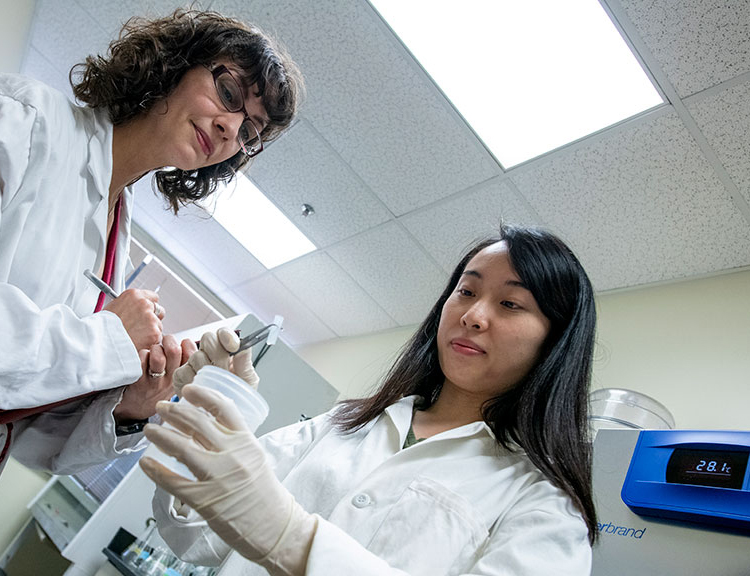 A novel liquid surface coating on human catheters could help reduce protein deposition that leads to urinary tract and bloodstream infections, according to researchers at the University of Maine and University of Notre Dame who are leading a study funded by the National Institutes of Health.
A novel liquid surface coating on human catheters could help reduce protein deposition that leads to urinary tract and bloodstream infections, according to researchers at the University of Maine and University of Notre Dame who are leading a study funded by the National Institutes of Health.
The research, funded by a five-year, upward of $2 million NIH grant, seeks to understand how protein adhesion influences bacterial colonization on commercial catheters, and will explore the development of liquid-infused catheter surfaces for controlling protein deposition. The research will contribute to understanding how reduction of protein deposition on catheters affects urinary tract infections (UTI). The goal is to reduce infection.
Key to this work is the use of ultra-thin liquid surface coatings that prevent proteins and bacteria from sticking. The innovation takes its inspiration from nature — the pitcher plant.
The study is led by principal investigators Ana Lidia Flores-Mireles, Hawk Family Assistant Professor of the Department of Biological Sciences at Notre Dame, and Caitlin Howell, UMaine associate professor of biomedical engineering.
“Most research on reducing catheter-associated infections has focused on killing the bacteria using antibiotics, which can lead to antibiotic resistance,” says Howell. “We are using a completely different approach: stopping the adhesion of the proteins that the body releases in response to the catheter, which stick to the catheter surface and make it much easier for the bacteria to adhere and start growing.”
Among UTIs acquired in the hospital, approximately 75% are associated with a urinary catheter, according to the Centers for Disease Control and Prevention. And the rising incidence of antibiotic-resistant pathogens can turn these infections into life-threatening conditions.
Howell and Flores-Mireles are researching how disrupting this process can lead to new ways of preventing infections without antibiotics. Key to this work is the use of ultra-thin liquid surface coatings that prevent proteins and bacteria from sticking. The innovation takes its inspiration from nature — the pitcher plant, with its liquid coating that traps insects.
Climate education
A University of Maine Climate Change Institute collaboration is strengthening climate education for youth in grades 5–12 in Maine. CCI faculty and staff have created the Climate Education Resources webpage to provide educators with a variety of informative materials in one place. The resources are grouped within five themes — Climate Synthesis & Overview, Climate Data Tools, Simple Climate Models, Video and Virtual Library and What’s Happening in Maine?
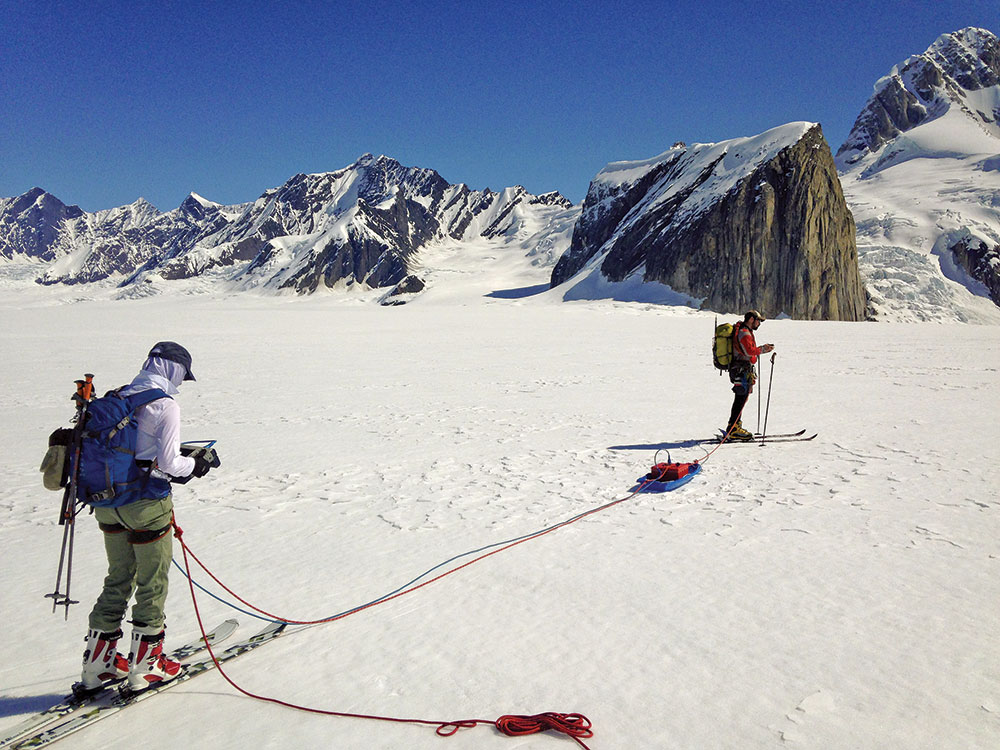
The numerous resources include: videos of research excursions on Everest and in Antarctica and Greenland; an Ice Age Trail Map and Guide; a list of 10 reasons why climate change matters; descriptions of how and why ice cores are collected; the Climate Reanalyzer, which details weather conditions worldwide as well as changes in climate through time; a talk by CCI director Paul Mayewski titled “Climate Change: Scientific Evidence or Alternative Facts”; a link to the Maine Climate and Agriculture Network website that examines projected changes in growing seasons and storm intensity; and the Maine’s Climate Future 2020 Update, which contains information about the state’s changing climate, impacts on natural resources, adaptation measures, and possible future implications
u0022We hope our effort makes it easier for students to explore why and how climate is changing, and what the changing climate means in their lives and in Maine communities.” Molly Schauffler
Mayewski and colleagues began working on the project in response to a Maine Department of Education (DOE) request. Those colleagues are Sean Birkel, research assistant professor and Maine State Climatologist; Daniel Dixon, research assistant professor; Ivan Fernandez, professor; Katie Glover, research associate; Bjorn Grigholm, research assistant professor; Cynthia Isenhour, associate professor; Karl Kreutz, professor; Betty Lee, CCI assistant director; Kirk Maasch, professor; and Molly Schauffler, assistant research professor.
The DOE’s outreach includes a request for input about increased climate and career education in response to the state’s adoption of Next Generation Science Standards (NGSS) and the Maine Climate Council’s Four-Year Plan for Climate Action. NGSS identifies scientific and engineering practices, crosscutting concepts, and core ideas in science that K–12 students should master to prepare for success in college and 21st-century careers.
The Maine Climate Council’s four-year plan for climate action calls for increasing public education about climate change, and enhancing educational opportunities for climate science and clean energy careers.
Science and face coverings
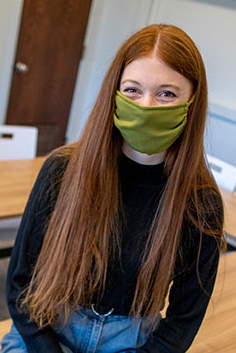 Individuals’ perceptions of science as a source of superior knowledge can predict the likelihood of mask wearing during the COVID-19 pandemic, according to a study led by University of Maine psychology researchers.
Individuals’ perceptions of science as a source of superior knowledge can predict the likelihood of mask wearing during the COVID-19 pandemic, according to a study led by University of Maine psychology researchers.
Doctoral students Morgan Stosic and Shelby Helwig, and assistant professor Mollie Ruben examined whether belief in science (BIS), a construct that measures the value individuals assign to scientific information, regardless of political affiliation, can predict mask wearing behavior and, if so, whether the relationship is mediated by belief in the effectiveness of face masks in reducing transmission of COVID-19.
Study participants self-reported mask wearing behaviors, beliefs in the effectiveness of face masks in preventing the spread of coronavirus, the degree to which they valued science as a source of superior knowledge, and sociodemographic data.
Results show that greater BIS predicted stronger belief in the effectiveness of face masks in reducing the transmission of COVID-19 and greater reported face mask wearing in public. In addition, the study confirmed the mediating role of belief in the effectiveness of face masks in reducing the transmission of COVID-19 in this relationship. Greater BIS predicted greater belief in the effectiveness of face masks in reducing the transmission of COVID-19, which, in turn, predicted greater reported face mask wearing behavior in public.
Wabanaki resources
The National Endowment for the Humanities has awarded a grant of more than $59,000 to the University of Maine’s McGillicuddy Humanities Center to support development of a centralized digital portal that will improve access to Wabanaki historical and cultural resources and archival collections currently distributed across UMaine and, in the future, to incorporate collections curated by several external institutions.
UMaine professor of English Margo Lukens, a faculty adviser to the McGillicuddy Humanities Center, will lead the interdisciplinary Wabanaki Resources Portal project, which seeks to enhance utilization of existing resources to promote the study of Wabanaki history and culture at the elementary, high school and post-secondary levels in Maine, and to facilitate interdisciplinary academic and arts scholarship.
 UMaine’s archival holdings related to Wabanaki history and culture are extensive, and include the collection of Fannie Hardy Eckstorm, an early 20th-century independent scholar of Wabanaki history and culture; the Molly Spotted Elk Collection, which provides a Penobscot view of the United States and Europe; the Linda Gilbert Collection of Penobscot Indian Music featuring original audio recordings about traditional song and dance; and the Maine Indian Collection, one of the largest institutional collections of Wabanaki baskets and basketmaking materials and tools, which is curated by the Hudson Museum. The museum also maintains a collection of significant primary resources, particularly historic images and documentary film footage portraying traditional Wabanaki activities such as basketmaking and harvesting.
UMaine’s archival holdings related to Wabanaki history and culture are extensive, and include the collection of Fannie Hardy Eckstorm, an early 20th-century independent scholar of Wabanaki history and culture; the Molly Spotted Elk Collection, which provides a Penobscot view of the United States and Europe; the Linda Gilbert Collection of Penobscot Indian Music featuring original audio recordings about traditional song and dance; and the Maine Indian Collection, one of the largest institutional collections of Wabanaki baskets and basketmaking materials and tools, which is curated by the Hudson Museum. The museum also maintains a collection of significant primary resources, particularly historic images and documentary film footage portraying traditional Wabanaki activities such as basketmaking and harvesting.
Other Wabanaki artifacts stewarded by UMaine include photographs of Passamaquoddy and Penobscot people, characteristic objects from the 1880s through today, and the Senator William S. Cohen papers related to the Maine Indian Land Claims Settlement Act of 1980. Fogler Library also maintains copies of recordings of Wabanaki speech and stories now in the Library of Congress collection.
Culture vs. genetics
 In a new study, University of Maine researchers found that culture helps humans adapt to their environment and overcome challenges better and faster than genetics.
In a new study, University of Maine researchers found that culture helps humans adapt to their environment and overcome challenges better and faster than genetics.
After conducting an extensive review of the literature and evidence of long-term human evolution, scientists Tim Waring, an associate professor of social-ecological systems modeling, and Zach Wood, a postdoctoral research associate with the School of Biology and Ecology, concluded that humans are experiencing a “special evolutionary transition” in which the importance of culture, such as learned knowledge, practices and skills, is surpassing the value of genes as the primary driver of human evolution.
Culture is an under-appreciated factor in human evolution, Waring says. Like genes, culture helps people adjust to their environment and meet the challenges of survival and reproduction. Culture, however, does so more effectively than genes because the transfer of knowledge is faster and more flexible than the inheritance of genes, according to Waring and Wood.
Culturally organized groups appear to solve adaptive problems more readily than individuals.
Culture is a stronger mechanism of adaptation for a couple of reasons, Waring says. It’s faster: gene transfer occurs only once a generation, while cultural practices can be rapidly learned and frequently updated. Culture is also more flexible than genes: gene transfer is rigid and limited to the genetic information of two parents, while cultural transmission is based on flexible human learning and effectively unlimited with the ability to make use of information from peers and experts far beyond parents. As a result, cultural evolution provides a stronger type of adaptation than old genetics.
Culture has influenced how humans survive and evolve for millennia. According to Waring and Wood, the combination of both culture and genes has fueled several key adaptations in humans such as reduced aggression, cooperative inclinations, collaborative abilities and the capacity for social learning. Increasingly, the researchers suggest, human adaptations are steered by culture, and require genes to accommodate. Factors that have no genetic equivalent such as conformity, social identity and shared norms and institutions make cultural evolution very group-oriented. Therefore, competition between culturally organized groups propels adaptations such as new cooperative norms and social systems that help groups survive better together.
Importance of indigenous stewardship
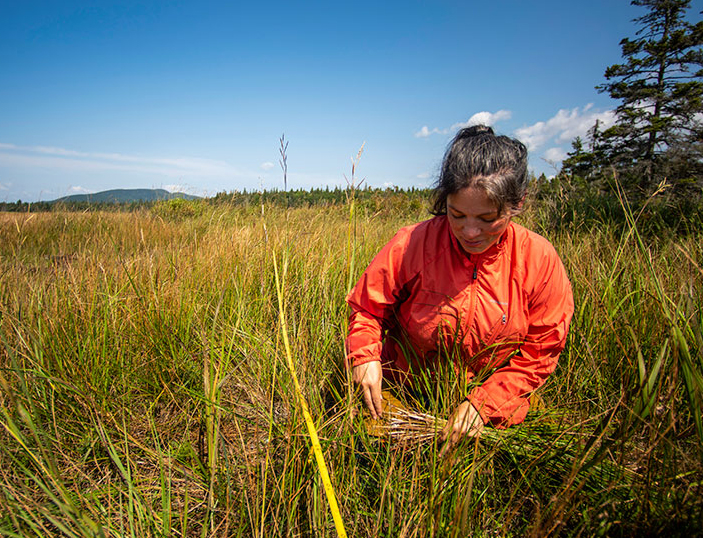 Darren Ranco says Indigenous peoples should be part of land use decisions, including whether to expand the quarantine zone for the emerald ash borer in northern Maine.
Darren Ranco says Indigenous peoples should be part of land use decisions, including whether to expand the quarantine zone for the emerald ash borer in northern Maine.
“When Indigenous people are on the land and making decisions about land management, biodiversity increases,” says the University of Maine associate professor of anthropology, chair of Native American Programs, and citizen of the Penobscot Nation.
An international study led by Erle Ellis, a professor at the University of Maryland, Baltimore County, agrees. It found that Indigenous peoples have shaped most of the Earth’s ecology for thousands of years. The main cause of the current biodiversity crisis is not human destruction of uninhabited wildlands, but rather the appropriation, colonization and use of lands previously sustainably managed.
Ranco and Jacquelyn Gill, a UMaine associate professor of paleoecology and plant ecology, and 15 other scientists worldwide joined Ellis to co-author the study, “People have shaped most of terrestrial nature for at least 12,000 years.” They examined the early and sustained global significance of cultural landscapes with a goal to better understand and conserve land, and the animals and plants that live on it.
In addition to its findings, the project demonstrates the power of big data, says Gill.
“The biodiversity crisis is global and tools like this are powerful, because they will help us meet the challenge at the scale of the problem,” she says. “We have an incredible opportunity to take this information and apply it to how we relate to land at the local scale going forward. Indigenous knowledge and stewardship should be central to conservation efforts. We can coexist with nature and wildlife.”
Predicting iceberg melting speeds
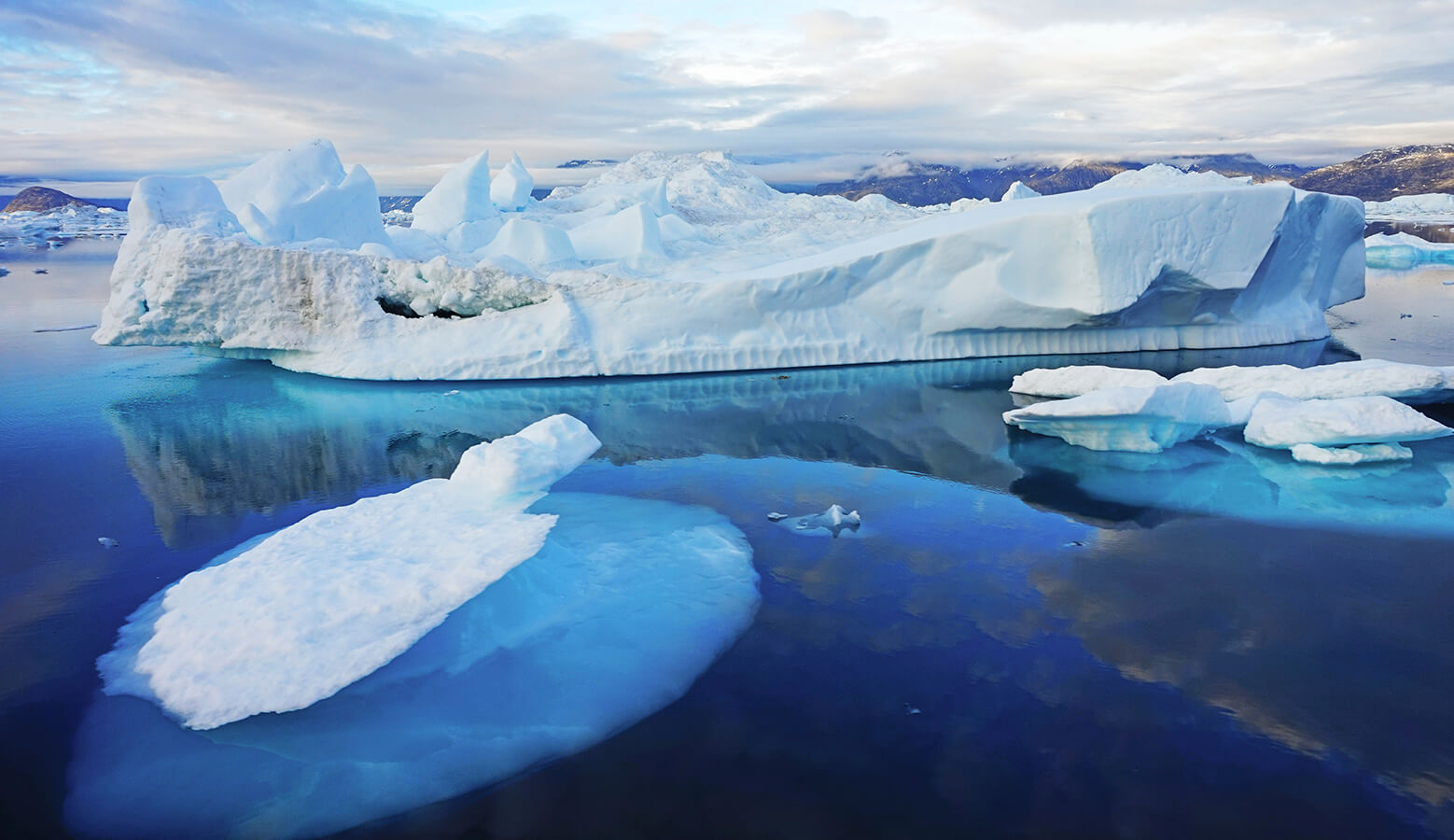
Research led by University of Maine glaciologist Kristin Schild to quantify and predict iceberg melting rates has been awarded NASA New (Early Career) Investigator Program (NIP) funding. Schild received one of 38 NASA NIP awards and is the first Maine-based researcher to receive the triennial recognition since 2003.
The assistant professor with the School of Earth and Climate Sciences and the Climate Change Institute will use her more than $378,000 award to develop universal measuring strategies and a model for predicting how fast any iceberg would melt and discharge freshwater into the ocean. These tools support remote sensing and iceberg melt studies, and enhance how global-scale models forecast sea level rise and climate change as a result of glacial ice activity.
u0022This is such an exciting project that tackles one of the fundamental questions concerning the changing cryosphere: where is this meltwater going and what is the impact?” Kristin Schild
Freshwater flux, when freshwater enters the ocean, can accelerate sea level rise, and Greenland tidewater glacier contribution to sea level rise has more than doubled since the early 2000s. According to Schild, icebergs constitute about 50% of this glacier contribution. Icebergs also have been connected with prior abrupt climate events across the globe.
Freshwater flux from melting icebergs also has increased in recent years, affecting local climates, ecosystems and local-scale fjord circulation, and posing challenges to shipping and offshore installations, Schild says.
Currently, iceberg freshwater flux is not considered in coupled atmosphere-ocean global climate models (GCMs), which are crucial for establishing climate thresholds, or points at which increasing temperatures would alter climate systems. Schild’s project aims to fill this gap by designing global metrics and a predictive model to anticipate the rate at which freshwater enters the ocean from any melting iceberg. This information will provide scientists with a more comprehensive look at the effects of glacial ice and global warming by allowing GCMs to factor in the contributions of icebergs.
